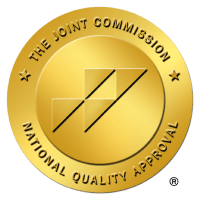Medicaid Telehealth Reimbursement
Summary
Maine Medicaid (MaineCare) reimburses for live video telehealth under certain conditions, and remote patient monitoring for patients with certain risk factors.
Definitions
Telehealth is the use of information technology by a Health Care Provider to deliver clinical services at a distance for the purpose of diagnosis, disease monitoring, or treatment. Telehealth Services may be either telephonic or interactive (combined video/audio).
Live Video
Policy
If the Member is eligible for the underlying covered service and providing it via telehealth is medically appropriate and is of comparable quality if it had been delivered in-person, the telehealth service is eligible for reimbursement.
Eligible Services/Specialties
There is a specific list of codes provided in the manual.
Eligible Providers
Click for a list of eligible providers.
Eligible Sites
FQHCs, RHCs or IHCs may be originating sites.
Geographic Limits
No reference found.
Facility/Transmission Fee
A facility fee is provided to a health care provider at the originating site.
Store-and-Forward
Policy
Provider manual indicates coverage of “telehealth services” which is inclusive of store-and-forward, however the manual only discusses interactive telehealth, and remote patient monitoring in detail. Additionally, the manual only discusses the use of the GT modifier (live interactive video), and does not mention the GQ modifier (asynchronous).
Eligible Services/Specialties
No reference found.
Geographic Limits
No reference found.
Transmission Fee
No reference found.
Remote Patient Monitoring
Policy
ME Medicaid provides coverage for telemonitoring services (which may or may not take place in real time) under certain circumstances.
Conditions
Click for a list of eligible conditions.
Provider Limitations
Click for a list of provider limitations.
Other Restrictions
Click for a list of other restrictions.
Email/Phone/Fax
Services may not be delivered through electronic mail.
Consent
Providers must deliver written educational information to patients at their visit.
Out of State Providers
Healthcare Providers must be licensed or certified in the state of Maine.
Miscellaneous
MaineCare will pay for transportation to a distant appointment if needed.
Private Payer Laws
Definitions
“Telemedicine, as it pertains to the delivery of health care services, means the use of interactive audio, video or other electronic media for the purpose of diagnosis, consultation or treatment. ‘Telemedicine’ does not include the use of audio-only telephone, facsimile machine or e-mail.”
Requirements
A health plan may not deny coverage on the basis that the coverage is provided through telemedicine if the health care service would have been covered through an in-person consultation between a covered person and a health care provider. Coverage must be determined in a manner consistent with coverage for services provided through in-person consultation.
Parity
A health plan may not deny coverage on the basis that the coverage is provided through telemedicine if the health care service would have been covered through an in-person consultation between a covered person and a health care provider.
Professional Regulation/Health & Safety
Definitions
Board of Licensure in Medicine & Board of Osteopathic Licensure: “Telemedicine” means the practice of medicine or the rendering of health care services using electronic audio-visual communications and information technologies or other means, including interactive audio with asynchronous store-and-forward transmission, between a licensee in one location and a patient in another location with or without an intervening health care provider. Telemedicine includes asynchronous store-and-forward technologies, remote monitoring, and real-time interactive services, including teleradiology and telepathology. Telemedicine shall not include the provision of medical services only through an audio-only telephone, e-mail, instant messaging, facsimile transmission, or U.S. mail or other parcel service, or any combination thereof.
Consent
Board of Licensure in Medicine & Board of Osteopathic Licensure: A licensee who uses telemedicine shall ensure the patient provides appropriate informed consent for the health care services provided, including consent for the use of telemedicine, which must be documented in the patient’s medical record.
Online Prescribing
Board of Licensure in Medicine & Board of Osteopathic Licensure: Prior to providing treatment, including issuing prescriptions, electronically or otherwise, a licensee who uses telemedicine in providing health care shall interview the patient to collect the relevant medical history and perform a physical examination, when medically necessary, sufficient for the diagnosis and treatment of the patient.
Cross State Licensing
Member of the following: Interstate Medical Licensure Compact, Nurse Licensure Compact.
Miscellaneous
Click for a list of professional regulations with telehealth-specific standards.
Source: Center for Connected Health Policy
https://www.cchpca.org
